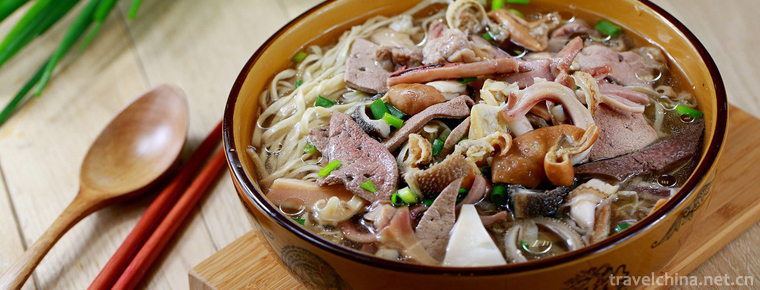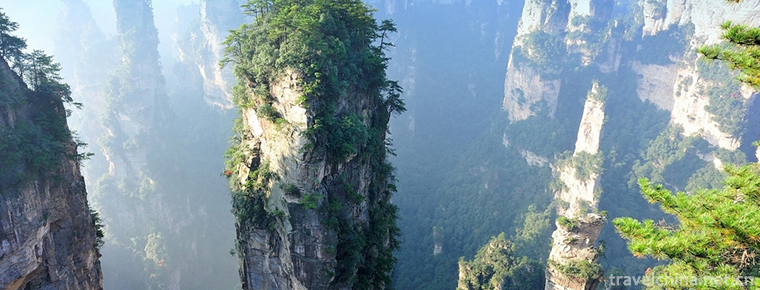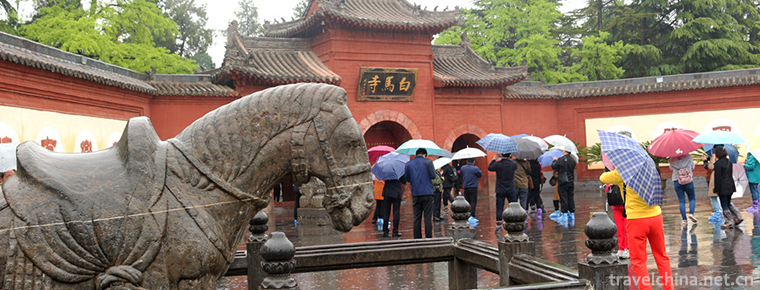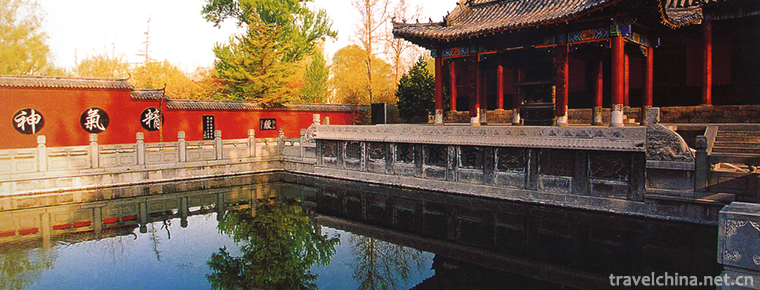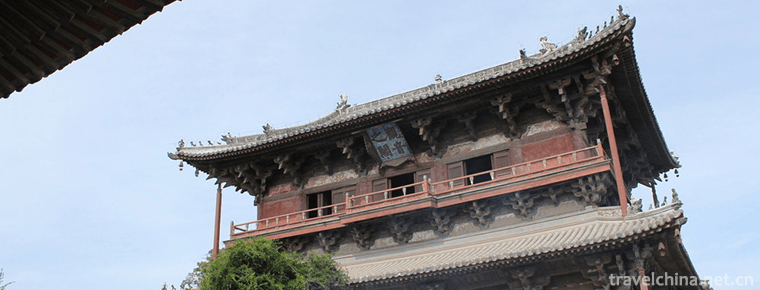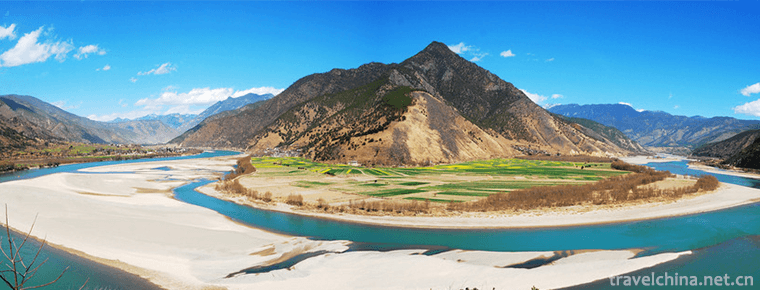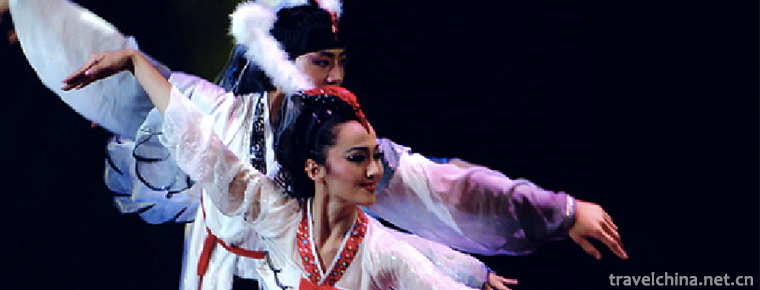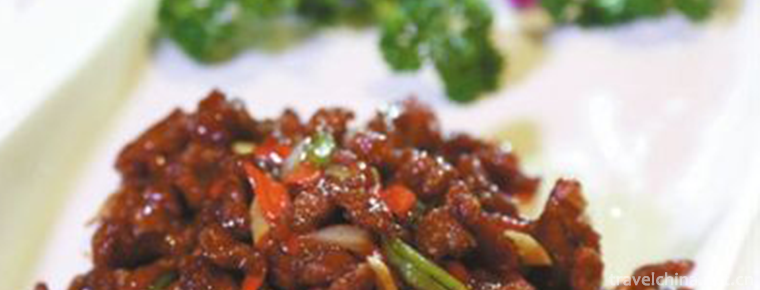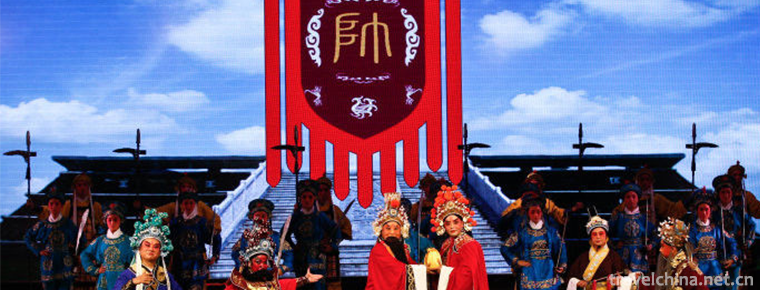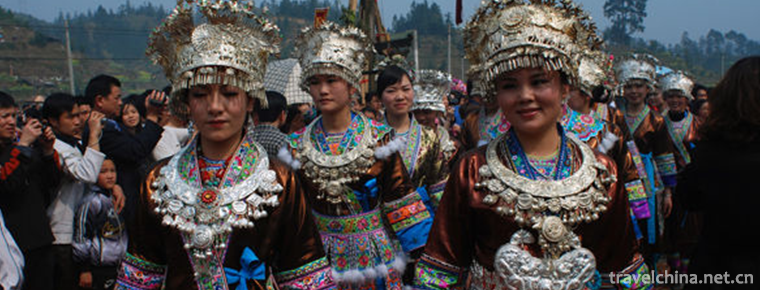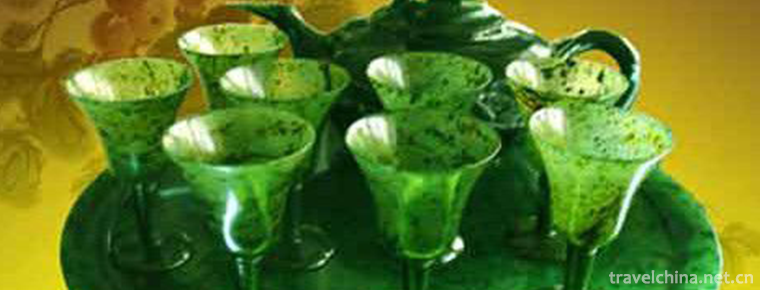Wangjianglou Park
Wangjianglou Park
Wangjianglou park is located in the South Bank of Jinjiang River, Jiuyanqiao, dongmenwai, Chengdu, Sichuan Province. It covers an area of 188 mu. It has willow stone fence, wave light building shadow, green bamboo path, pavilions and pavilions. The main buildings are Chongli Pavilion, Zhuojin tower, HuanJian Pavilion, Wuyun immortal Pavilion, liubeichi and spring Pavilion.
Wangjianglou Park was built in the Ming and Qing Dynasties in memory of Xue Tao, a poetess of Tang Dynasty. It was established as Wangjianglou Park in the Republic of China and is now a national key cultural relics protection unit.
Wangjiang tower
The most magnificent building in Wangjianglou park is the 39 meter high Wangjiang tower, also known as Chongli Pavilion. The ridges and sparrows on each floor are decorated with exquisite clay sculptures of animals and figures. The top of the pavilion is gilded with gold. Under the beautiful sun, it is glittering and dazzling. Ingenious design, cornice angle, Diao Liang Huadong, magnificent. When you climb the tower, you can have a panoramic view of the spring scenery of Jinjiang River. In addition, there are two buildings, one on each side, and the other on the other. One Pavilion and two floors and the adjacent Wuyun immortal Pavilion constitute a garden building group with rich Sichuan style.
Zhuojin building
Zhuojin tower, located on the west side of Chongli Pavilion, has two floors and three rooms, which is slightly like a boat. In the Han Dynasty, Chengdu brocade households often washed the brocade woven in Jinjiang, so Jinjiang was also known as zhuojinjiang, hence the name of Zhuojin tower. The building is in the shape of a boat, which is said to commemorate Xue Tao's farewell to his close friend Yuan Zhen.
Poetry reciting tower
Located in the east of Chongli Pavilion, the chanting tower is built on the basis of that of bijifang where Xue Tao lived in his later years. It is open on all sides and depends on each other in three layers. The loquat Gate Lane in the southwest of the reciting tower was built according to the meaning of "close the door in the loquat flower" in the poem presented by the poet Wang Jian to Xue Tao. Passing through the pipa Gate Lane, there are five cloud immortal hall, spring Pavilion, Qingyuan room and HuanJian Pavilion. One Pavilion and two floors and the adjacent Wuyun immortal Pavilion constitute a garden building group with rich Sichuan style.
Characteristics of the park
The open area of Wangjianglou park is a garden landscape area mainly composed of bamboo, which is the special park with the most bamboo varieties in China. Xue Tao loved bamboo all his life and praised bamboo for its "self-reliance with an open mind" and "cangcangjin Jieqi". In memory of Xue Tao, descendants planted all kinds of excellent bamboos in the garden, bringing together more than 200 kinds of bamboos at home and abroad, including some rare and precious ones. The bamboo in the park has thousands of postures and each has its own unique charm. People regard the garden with its bamboo grove like sea and endless interest as "Bamboo Park".
In the northeast of the park, there is a Yujin bridge leading to the other side of Jinjiang River, which forms a transitional landscape with Feiyun waterfall and moon watching platform. Every time the moon rises, you can enjoy the moon shadow in the wave on the moon watching platform, so the river bank under the platform is engraved with the words "Jin Bo Li Zhi". In the east of Qiaodong, there is a temple style building named "Jinjiang chunse", which was demolished from the former wusheng palace. It belongs to the Qing Dynasty building and is named after Du Fu's name "Jinjiang spring scenery comes to heaven and earth".
There is an entertainment service area along the river, including tea house, bijiyuan fishing area, restaurant, children's paradise, etc. Mingluolou is the main tea house in the garden. It is named after he Shaoji's famous saying "flowers and rafts are fragrant for thousands of years". It is extremely sweet to make tea with Xue Tao's well water. In his later years, Xue Tao lived in bijifang, the northwest corner of the city. Today, Biji garden is named after it.
Park status
Wangjianglou Park spent more than 3 million yuan to complete the greening transformation of more than 30000 square meters, among which HuanJian river is one of the transformation tasks. The 300 meter HuanJian River starts from the bonsai garden in the west, passes through the bamboo forest, Biji garden, central amusement park, and ends at the entrance of Qingyi Lake in the south. Formerly known as "Longxugou" by the public, it is very beautiful after transformation.
According to the goal of building Chengdu into a "world modern garden city", many municipal parks in Chengdu are undergoing landscape transformation, and many of them have been standardized or even reduced.
Historical evolution
Xue Tao, with the word Hongdu, was born in Chang'an (now Xi'an, Shaanxi Province). He lived in Sichuan with his father. He was intelligent and eager to learn from his childhood. After his father's death, he became a musician at the age of 15 because of his poor family. She was good at poetry and prose, and was proficient in rhythm. She was appreciated by Wei Gao, the governor of Xichuan at that time. She was able to enter and leave the government. She once worked as a schoolgirl, and was called a girl's school book. According to records, Xue Tao has 500 poems, and her contemporaries such as Yuan Zhen, Bai Juyi, Ling Hu Chu, Pei Du, Du Mu, Liu Yuxi, Zhang Ji, and so on, highly praised her, and wrote poems in harmony with each other. Unfortunately, most of these poems have been lost, and only more than 90 poems have been handed down.
Most of the ground of the park is covered with bamboo forest. Because Xue Tao loved bamboo all his life, he often encouraged himself with the virtue of "green, vigorous, strange, open-minded and self-sustaining". Later generations planted all kinds of excellent bamboo in the park, and thus became a famous bamboo gathering place in China, also known as "Bamboo Park" or "Jincheng bamboo garden". There are more than 150 kinds of bamboos in the park, including not only famous bamboos from Sichuan, but also rare bamboos from southern provinces of China, Japan and Southeast Asia. The main varieties are renmian bamboo, Buddha belly bamboo, square bamboo, chicken feet bamboo, purple bamboo, Mianzhu, huqin bamboo, wheat bamboo, solid bamboo and so on.
In the garden, there is also Xue Tao well, which is said to be used for drawing water and making paper for Xue Tao. Beside the well, there are steles with the words "Xue Tao well", which is the handwriting of Ying Xiong, the magistrate of Chengdu in the Qing Dynasty. In his later years, Xue Tao made a kind of crimson small paper in bijifang, where he lived. Its color was gorgeous and exquisite. It was called "Xue Tao paper" in the world. It was imitated in many dynasties. In fact, this well was copied by the king of Shu in Ming Dynasty.
Ticket information
Cultural relics protection: 20 yuan, open garden area: free.
Opening Hours
Cultural relics area: 8:00-18:00, open area: 6:00-21:00.
Best season
All seasons
Suggest to play
2 hours
Geographical transportation
Bus route: Wangjianglou Park Station
Chengdu No.19 Road
Chengdu No.35 Road
Chengdu 335 Road

Wangjianglou Park
-
Pig liver Noodles
made from noodles, pig bones, fresh pig liver and other main ingredients
Views: 281 Time 2018-10-12 -
zhangjiajie national forest park Avatar Filming place
Zhangjiajie national Forest Park is located in Zhangjiajie City, northwest of Hunan province. On September 25, 1982, with the approval of the State Council of the People's Republic of China
Views: 245 Time 2018-10-28 -
White Horse Temple Baima Temple
Baima Temple is located in Baima Temple Town, Luolong District, 12 kilometers east of the old city of Luoyang City, Henan Province. Founded in the eleventh year of Yongping in the Eastern Han Dynasty
Views: 218 Time 2019-01-02 -
Baimaiquan Park
Baimaiquan Scenic Area, located at No. 2017 Huiquan Road, Zhangqiu District, Jinan City, Shandong Province, is located in the eastern part of Jinan City. Founded in 1986
Views: 169 Time 2019-01-02 -
Tianjin Dule Temple
Dule Temple, also known as the Great Buddha Temple, is located in Jizhou District, Tianjin, China. It is one of the three remaining temples of Liao Dynasty in China and one of the famous ancient build
Views: 297 Time 2019-01-08 -
The First Bay Scenic Area of the Yangtze River
The first bay of the Yangtze River (the first bend of the Yangtze River and the first bay of the Wanli Yangtze River): located between Shigu Town of Lijiang City in the northwest of Yunnan Province an
Views: 178 Time 2019-03-17 -
Korean Crane Dance
Crane Dance of the Korean Nationality has a long history and is a unique dance performance form of the Korean Nationality in China. It has the national characteristics and the value of artistic resear
Views: 213 Time 2019-04-16 -
Imitated Diet Making Skills of Imperial Diet in Qing Dynasty
Imitated meals (imperial meals of the Qing Dynasty) production skills, Beijing Xicheng District local folk traditional skills, one of the national intangible cultural heritage.
Views: 302 Time 2019-04-29 -
Han tune
The mast of Hanzhong Diaoqu, a local traditional drama in Hanzhong City, Shaanxi Province, is one of the national intangible cultural heritages.
Views: 194 Time 2019-05-02 -
Miao Series Slope Cluster
Miao Series Slope Club refers to the festival activities of villages and villages in Rongshui County, Guangxi Zhuang Autonomous Region during the period from the third to seventeenth day of the first
Views: 160 Time 2019-06-05 -
Nightlight Cup Carving
The manufacture of luminous cup needs 28 complicated processes. First of all, we need to select the material, then make the blank according to a certain size to form the preliminary noctilucent cup. F
Views: 137 Time 2019-07-11 -
Deyang local culture
On April 2, 2013, the Information Office of the people's Government of Deyang City, Sichuan Province announced the city logo of Deyang to the public. Among them, "the source of ancient Shu, the city of heavy loading" has become the main logo of Deyang City
Views: 350 Time 2020-12-14
